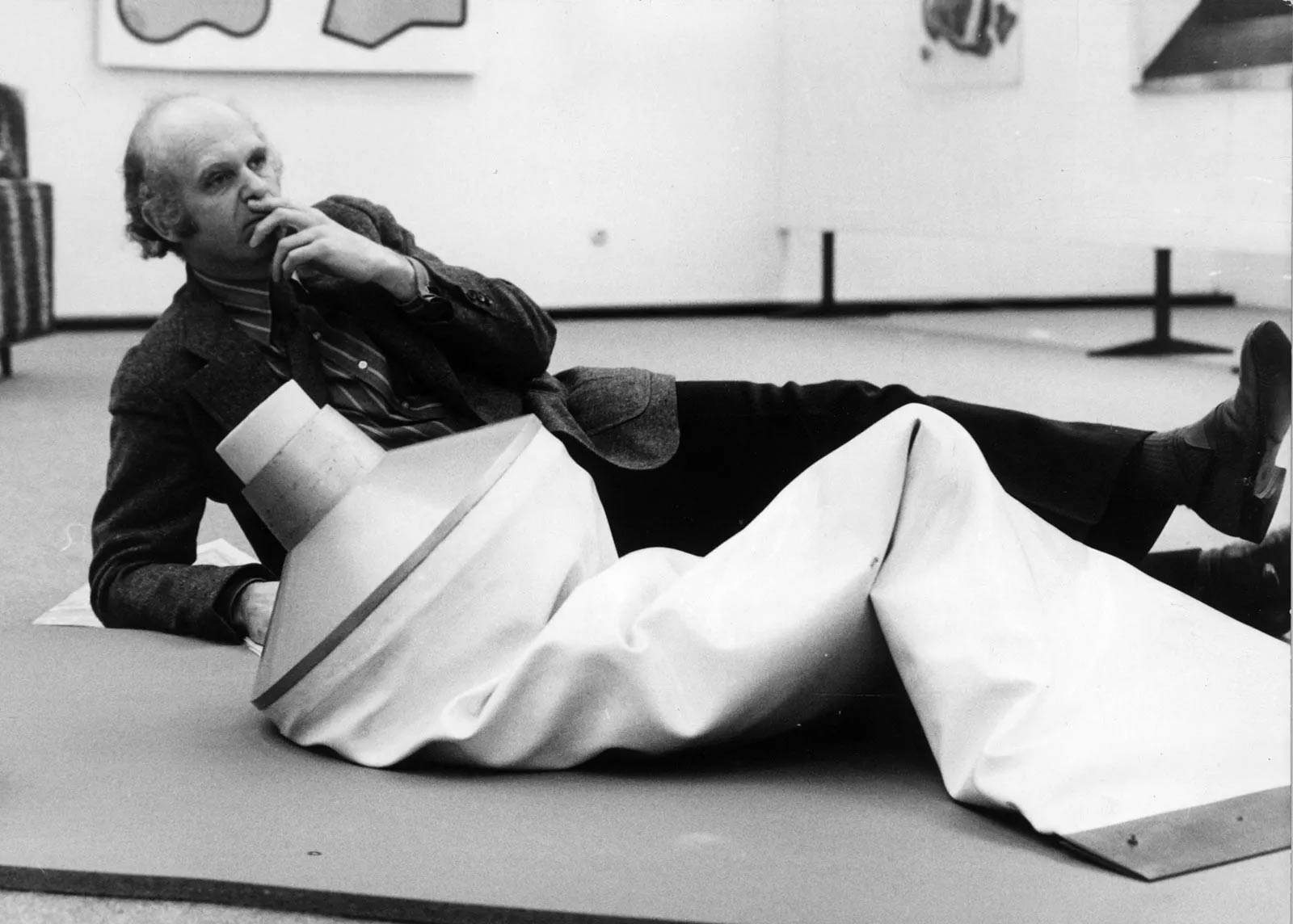Swedish-born, naturalized U.S. artist Claes Oldenburg, one of the leading exponents of Pop Art, famous for elevating everyday objects such as ice cream, scoops, stamps, buns, clothespins, paintbrushes and more to the status of monuments, passed away today in New York at the age of 93. The news came from the Paula Cooper gallery, which represented the American artist.
Of Swedish descent, born in Stockholm in 1929 and remaining in his native country until the age of seven, he moved with his family in 1936 to Chicago, and in 1946 began studying at Yale University, where he remained until 1950, then moved on to the Art Institute of Chicago before moving to New York in 1956. In 1959 he exhibited at his first solo show at the Judson Gallery in New York: from there on Oldenburg established an international reputation, linking himself from 1962 to the Pop Art movement, and showcasing works such as The Street (1960), an installation of suspended works made from urban debris, and The Store (1961) a display of small plaster sculptures of everyday objects set up in a storefront. In 1963 he moved to Los Angeles and then returned to New York. In 1966 he held his own exhibition at the Moderna Museet in Stockholm, and the following year he created his first monument for a public space, beginning to develop his poetics of everyday objects elevated to monument status. The final consecration came in 1969 with an exhibition at the Museum of Modern Art, New York (1969).
In 1970 Oldenburg met art historian Coosje van Bruggen, with whom he formed a lifelong artistic partnership. Continuing to explore the potential of everyday objects, Oldenburg and van Bruggen together designed and installed monumental-scale sculptures in cities around the world. Taking inspiration from fruit, work tools, children’s toys, and more, the two artists enlarged and animated many objects: works such as Spoonbridge and Cherry in Minneapolis, Flying Pins in Eindhoven, Clothespin in Philadelphia, and Dropped Cone in Cologne became famous monuments in their cities. Oldenburg was fascinated by popular culture and identified and therefore reproduced many iconic objects, such as the telephone and the hamburger, in works that transformed familiar things into strange and vivid monuments.
In March 2022 Oldenburg opened his last public project of his life, the installation Plantoir, Blue at Rockefeller Center in New York. Before that, Oldenburg’s works were exhibited around the world: particularly important was the 1995 anthological exhibition Claes Oldenburg: An Anth ology, which touched on the National Gallery in Washington, the Guggenheim in New York, the Kunsthalle in Bonn, and the Hayward Gallery in London. In Italy, Oldenburg exhibited together with Coosje van Bruggen at the exhibition Sculpture by Chance held between 2006 and 2007 at the Castello di Rivoli.
“The loss of Claes Oldenburg, a great artist and good friend,” says Paula Cooper, owner of the eponymous gallery, “is deeply saddening. Although I was introduced to his work by Henry Geldzahler in 1960, I did not meet Claes until the mid-1960s, when I was working at Park Place. By that time, he was already a remarkably strong force among his peers. His strikingly original early work had an enormous influence on many artists, who were informed by his freedom of thought and his radical way of expressing himself. When he began his collaboration with Coosje van Bruggen, with whom I had a close friendship, the work became more grandiose and daring. It was exciting to work with Claes, whose strange interpretation of things was delightful and could completely change one’s mood.”
 |
| Farewell to Claes Oldenburg, the Pop artist who made monuments out of ordinary objects |
Warning: the translation into English of the original Italian article was created using automatic tools. We undertake to review all articles, but we do not guarantee the total absence of inaccuracies in the translation due to the program. You can find the original by clicking on the ITA button. If you find any mistake,please contact us.